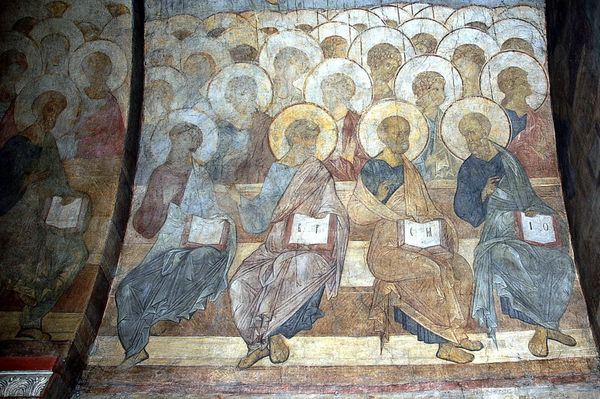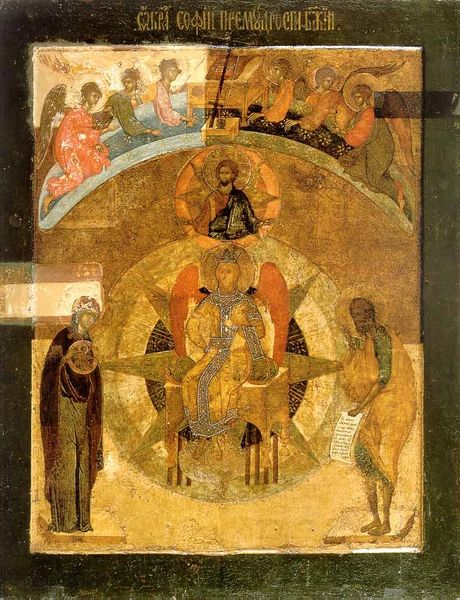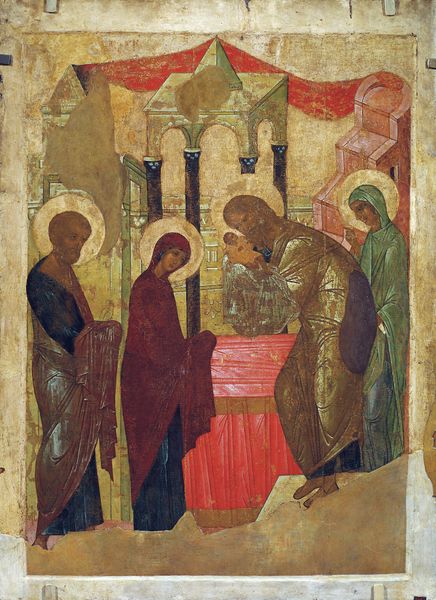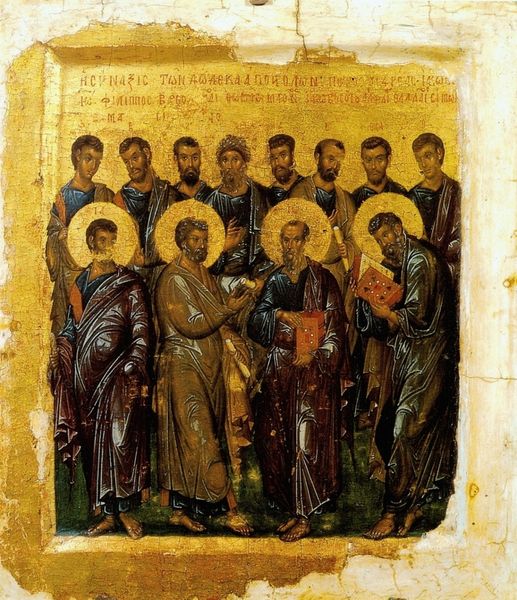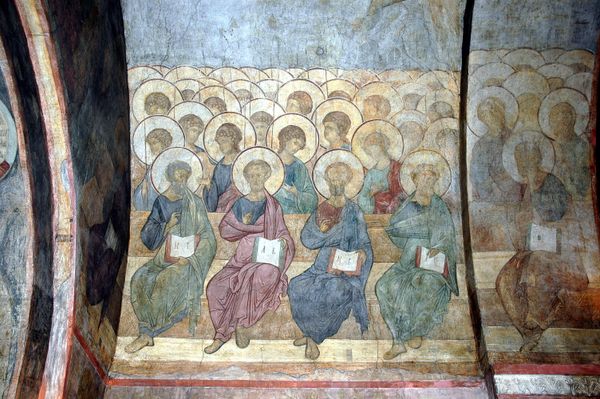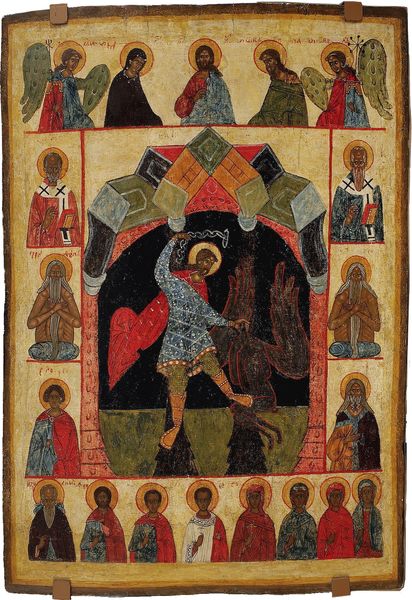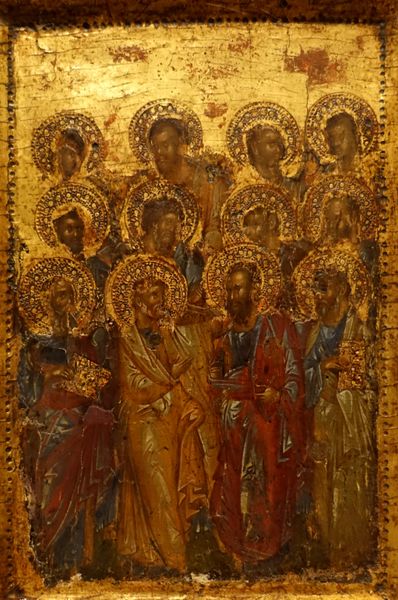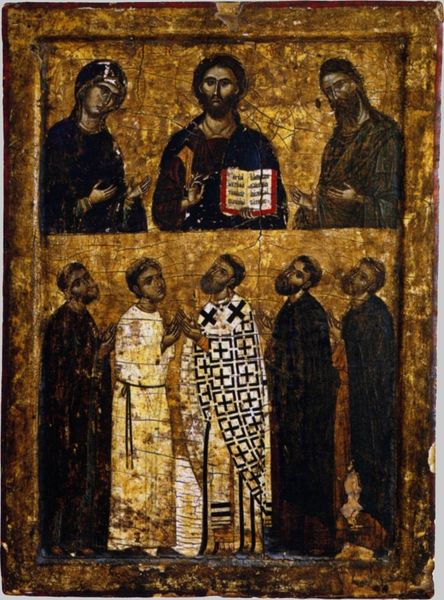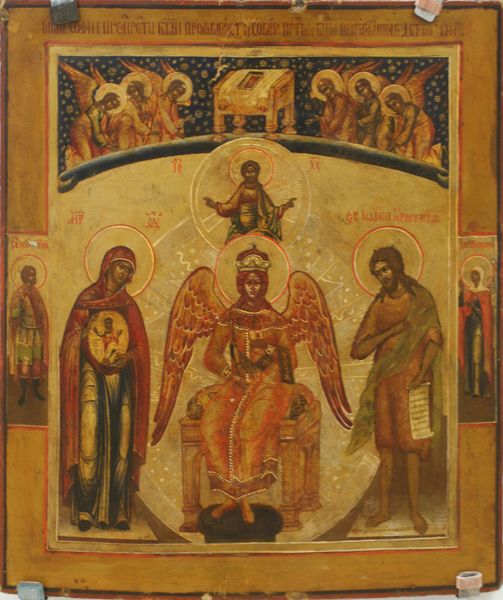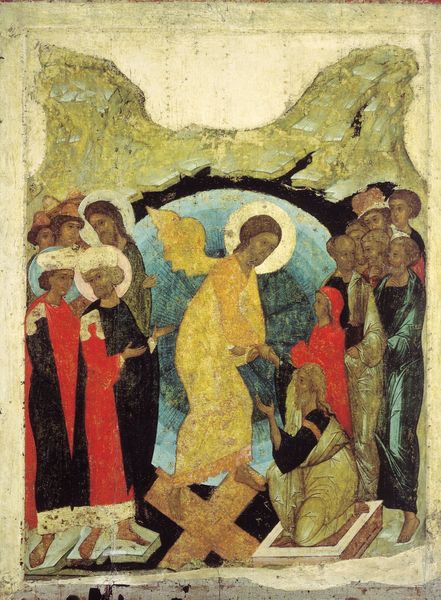
tempera, painting
#
byzantine-art
#
medieval
#
tempera
#
painting
#
figuration
#
oil painting
#
jesus-christ
#
christianity
#
history-painting
#
angel
Dimensions: 125 x 92 cm
Copyright: Public domain
Editor: Here we have Andrei Rublev’s “Ascension of Jesus” painted in 1408. It's a tempera painting. It’s incredible how this scene is portrayed with such striking colors! What do you see in this piece? Curator: I’m immediately drawn to the materiality of the piece. This isn't just about portraying a religious event. Think of the labor involved. Tempera is incredibly demanding, a mix of pigment and egg yolk meticulously applied to a prepared panel. Rublev's choice of this medium speaks volumes about the context of production. How did the conditions of 15th-century Russia shape not just the subject matter, but the very way it was made? Editor: So you are more interested in the process of painting it and what kind of work that implied at that time? Curator: Absolutely. Look closely. What do the colours themselves tell us about trade routes and access to certain pigments? Did Rublev prepare the panel himself or was that a task for an apprentice? What about the social context? Was this work commissioned and, if so, how did that affect the final composition? Byzantine art existed within a tightly knit socio-economic and political system. Who consumes such images and for what purpose? It all points toward complex systems of material and labor. Editor: That makes a lot of sense. I never considered the materials of art being indicative of something greater. Curator: Materiality and making always matter. When we unpack the processes and resources of creation, we are really uncovering hidden networks of exchange, power and devotion. Editor: This painting now seems to hold so much more meaning beyond the immediate subject of ascension. I am also inspired to approach artwork differently now. Curator: Indeed, by looking at what it's made of and how it's made, we get closer to the art of living behind the art object.
Comments
No comments
Be the first to comment and join the conversation on the ultimate creative platform.
